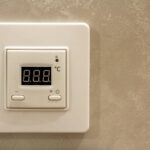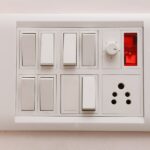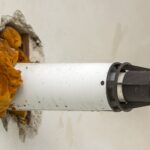Understanding different types of air conditioning systems
Air conditioning systems come in various types and sizes. Central air conditioning is popular in large homes and offices. It uses a network of ducts to distribute cool air throughout the building. Window units are common in apartments and small spaces. These self-contained units fit into window openings. Ductless mini-split systems offer flexibility for homes without existing ductwork. They consist of an outdoor compressor and indoor air handlers. Portable air conditioners provide cooling for single rooms and can be moved as needed. Air conditioning https://onninen.pl/en/products/Air-conditioning-and-ventilation/Air-conditioning technology has advanced significantly in recent years, improving energy efficiency and performance.
When selecting an air conditioning system, consider the size of your space. A unit that’s too small won’t cool effectively, while an oversized system wastes energy. Professional HVAC technicians use load calculations to determine the right size. These calculations take into account factors such as square footage, insulation, and local climate. Energy efficiency ratings are crucial for long-term cost savings. Look for units with high Seasonal Energy Efficiency Ratio (SEER) ratings. Modern systems often include smart features like programmable thermostats and remote control via smartphone apps. These features can help optimize energy usage and improve comfort levels.
Wall air conditioners are a popular choice for many homeowners and businesses. These units are installed directly through an exterior wall, requiring no ductwork. They’re ideal for cooling individual rooms or small spaces. Wall air conditioners https://onninen.pl/en/products/Air-conditioning-and-ventilation/Air-conditioning/Wall-air-conditioners offer several advantages over window units. They provide a more permanent installation and better security. Many models come with heating capabilities, making them suitable for year-round use. When installing a wall unit, proper insulation around the sleeve is crucial to prevent air leaks and maintain efficiency.
Commercial spaces often require more powerful cooling solutions. Commercial air conditioners are designed to handle larger areas and higher cooling demands. These systems come in various configurations, including rooftop units, split systems, and multi-zone setups. Commercial air conditioners https://onninen.pl/en/products/Air-conditioning-and-ventilation/Air-conditioning/Commercial-air-conditioners typically offer advanced controls and monitoring capabilities. They can integrate with building management systems for optimal performance. Many commercial units use variable refrigerant flow (VRF) technology, allowing for precise temperature control in different zones.
Proper maintenance is essential for all air conditioning systems. Regular filter changes, typically every 1-3 months, help maintain air quality and system efficiency. Annual professional inspections can identify potential issues before they become major problems. For central systems, duct cleaning every 3-5 years can improve air flow and reduce allergens. Keep outdoor units clear of debris and vegetation to ensure proper airflow. During winter months, cover outdoor units to protect them from snow and ice. These maintenance steps can extend the life of your system and reduce energy costs.
Improving indoor air quality with ventilation
Ventilation plays a crucial role in maintaining healthy indoor air quality. Proper ventilation helps remove pollutants, control humidity, and reduce the concentration of airborne contaminants. There are three main types of ventilation systems: natural, mechanical, and hybrid. Natural ventilation relies on windows and building design to create airflow. Mechanical ventilation uses fans and ducts to circulate air. Hybrid systems combine both approaches for optimal performance. The American Society of Heating, Refrigerating and Air-Conditioning Engineers (ASHRAE) recommends a minimum of 0.35 air changes per hour for residential spaces.
Exhaust fans in bathrooms and kitchens help remove moisture and odors. These fans should vent directly to the outside, not into attic spaces. For kitchens, range hoods with a capacity of at least 100 cubic feet per minute (CFM) are recommended. Bathroom fans should provide 1 CFM per square foot of floor space, with a minimum of 50 CFM. In tight, energy-efficient homes, heat recovery ventilators (HRVs) or energy recovery ventilators (ERVs) can provide fresh air while minimizing energy loss. These systems transfer heat from outgoing stale air to incoming fresh air, reducing the load on heating and cooling systems.
Air conditioning and ventilation https://onninen.pl/en/products/Air-conditioning-and-ventilation systems work together to create comfortable indoor environments. Modern HVAC systems often integrate both functions. This integration allows for better control of temperature, humidity, and air quality. Some advanced systems use demand-controlled ventilation, adjusting fresh air intake based on occupancy or CO2 levels. This approach can save energy while maintaining optimal indoor air quality. In commercial settings, economizers can bring in cool outdoor air when conditions are favorable, reducing the need for mechanical cooling.
Proper filtration is essential for both air conditioning and ventilation systems. MERV (Minimum Efficiency Reporting Value) ratings indicate a filter’s ability to capture particles. Higher MERV ratings provide better filtration but may restrict airflow. For most residential systems, filters with MERV ratings between 8 and 13 offer a good balance of efficiency and airflow. HEPA (High-Efficiency Particulate Air) filters can remove 99.97% of particles as small as 0.3 microns. However, they require specialized systems due to their high resistance to airflow. Regular filter changes are crucial for maintaining system efficiency and indoor air quality.
When designing or upgrading HVAC systems, consider the specific needs of your space. Factors such as local climate, building layout, and occupancy patterns all influence system requirements. Professional HVAC designers use sophisticated software to model airflow and energy usage. This modeling helps optimize system performance and energy efficiency. In larger buildings, zoning systems can provide individualized comfort control for different areas. Variable Air Volume (VAV) systems adjust airflow to match changing cooling demands throughout the day. These advanced systems can significantly reduce energy consumption while improving comfort levels.
Energy-saving tips for air conditioning users
Proper use of air conditioning can lead to significant energy savings. Set your thermostat to 78°F (26°C) when you’re at home and awake. Each degree higher can save about 3% on cooling costs. Programmable or smart thermostats can automatically adjust temperatures based on your schedule. These devices can reduce energy usage by up to 10% annually. During cooler nights, open windows and use fans to bring in fresh air. This natural cooling can reduce the need for air conditioning in the morning hours.
Regular maintenance is key to efficient operation. Clean or replace air filters monthly during peak usage. Dirty filters can increase energy consumption by up to 15%. Have a professional tune-up your system annually. This service can improve efficiency by up to 5%. Keep outdoor units clear of debris and vegetation. Ensure at least 2 feet of clearance around the unit for proper airflow. Clean evaporator and condenser coils as needed. Dirty coils can reduce efficiency by up to 30%. Check and seal ductwork to prevent air leaks. Leaky ducts can waste up to 30% of cooled air.
Use ceiling fans in conjunction with your air conditioning. Fans create a wind-chill effect, making you feel cooler without lowering the temperature. This allows you to set the thermostat about 4°F higher without affecting comfort. Remember to turn fans off when leaving the room, as they cool people, not spaces. Close blinds and curtains during the hottest parts of the day to reduce solar heat gain. Light-colored window treatments can reflect up to 80% of incoming solar radiation. Consider installing awnings or exterior shades for maximum protection.
Minimize the use of heat-generating appliances during hot days. Use a microwave or outdoor grill instead of the oven. Run dishwashers and washing machines at night when temperatures are cooler. These practices reduce the heat load on your air conditioning system. Use exhaust fans when cooking or showering to remove heat and humidity. Ensure these fans vent directly outside, not into attic spaces. Consider using a dehumidifier in humid climates. Reducing humidity can make your space feel cooler at higher temperatures.
Invest in energy-efficient appliances and lighting. ENERGY STAR certified air conditioners use about 15% less energy than standard models. LED light bulbs generate less heat and use up to 75% less energy than incandescent bulbs. Proper insulation and air sealing can reduce cooling costs by up to 15%. Focus on attic insulation, as this is where the most heat enters your home. Consider upgrading to low-E windows, which can reduce heat gain by up to 77%. These energy-saving measures not only reduce costs but also improve comfort and reduce strain on your air conditioning system.





